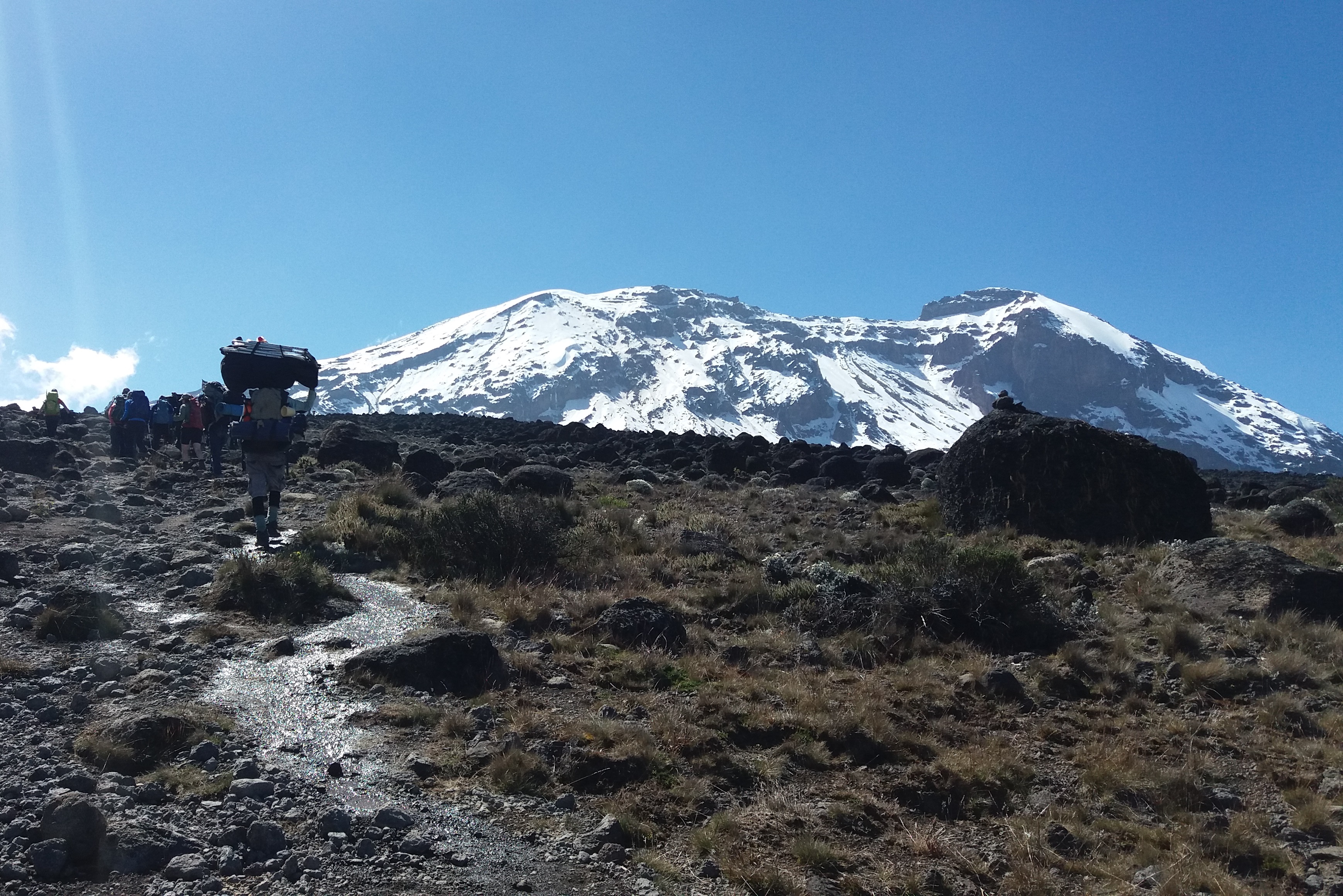1. How many porters will accompany us?
You will be assigned 3-6 porters per climber. The exact number depends on the size and weight of your luggage as well as the number of climbers in your group. Porters are responsible for carrying all camping equipment, including tents, tables, chairs, and portable toilets, allowing you to hike with just a backpack.
2. How many guides will we have for our climb?
For 2-3 climbers: One lead guide and one assistant guide.
For 4-6 climbers: One lead guide and two assistant guides.
For 7-8 climbers: One lead guide and three assistant guides.
For 9-10 climbers: One lead guide and four assistant guides.
3. After my Kilimanjaro climb, can I combine it with a Tanzania safari or Zanzibar holiday?
Yes! A private climb offers the flexibility to add a safari or a Zanzibar beach adventure. You can choose between thrilling game drives in Tanzania’s renowned national parks or relaxing on the beautiful beaches of Zanzibar.
4. What is the best way to get to Kilimanjaro?
Kilimanjaro International Airport (JRO) is the best option, located just 45 minutes from Moshi, the closest town to the mountain. The airport receives direct flights primarily from the Netherlands, the Middle East, and Turkey. Recommended options from Europe include KLM via Amsterdam and Turkish Airlines via Istanbul. For travelers from North America or the Far East, flying via the Middle East is advisable.
5. Are there any age restrictions on climbers?
The minimum age to climb Mount Kilimanjaro is 10 years. There is no upper age limit, but climbers over 60 years old should undergo a medical check-up and follow their doctor's advice before attempting the climb.
6. What travel insurance do you recommend?
We recommend travel insurance that covers climbing up to 6000m above sea level. Ensure that the policy includes coverage for mountain climbing emergencies, and read the fine print carefully before purchasing.
7. What happens if I need to descend?
If you need to descend, assistance can be arranged based on your location and the urgency of the situation. Options include being stretchered off, carried by porters, or transported by vehicle or helicopter. Always inform your mountain guide immediately if you experience any concerning symptoms.
8. Can I climb without porters and guides?
No, it is not possible to climb Mount Kilimanjaro alone. The Kilimanjaro National Park Authority (KINAPA) requires climbers to have a licensed guide and porters for safety reasons.
9. Do you organize trips to climb Kilimanjaro for charity?
Yes, we organize charity climbs for Mount Kilimanjaro, as we believe in contributing to worthy causes. We would be honored to support your charity climb.
10. How much do you recommend tipping porters?
Following the recommendations of the Kilimanjaro National Park and the Kilimanjaro Porters Protection Group, tips range from $200 to $300 per person, depending on group size. While these are guidelines, you are not obligated to tip if you are dissatisfied with the service.
11. How will I bathe or wash during my climb?
Each morning and evening, you will receive a bowl of hot water for washing. We also recommend bringing baby wipes for hand cleaning throughout the day. Remember to carry a waste bag for used wipes, as everything you bring up the mountain must come back down.
12. What are your mountain tents like?
We use Mountain Hardwear Trango tents, known for their strength, waterproof capabilities, and durability. Each tent can accommodate three people, but we allow two to provide extra room for luggage. Our mess tents are spacious and equipped with comfortable camp chairs for relaxing meals.
13. What will the food be like?
Our chefs prepare nutritious and energy-giving meals tailored for the demands of trekking. You can expect fresh, seasonal ingredients sourced from local markets in Moshi. We can accommodate dietary restrictions,
including vegetarian, vegan, and low-carb diets.
see more about food on mountain
14. How many days does it take to climb Kilimanjaro?
Climbing Kilimanjaro typically takes between 5 to 9 days. We recommend longer routes of at least 6 days to allow for
better acclimatization and higher summit success rates..
see more about kilimanjaro routes
15. How difficult is it to climb Mount Kilimanjaro?
Kilimanjaro is considered a walkable mountain, suitable for those without technical climbing skills. However, it requires determination, as you will trek for 7-8 hours daily and camp in challenging conditions. Acclimatization to high altitudes is crucial to avoid altitude sickness.
16. What is the best route to take for hiking Mt. Kilimanjaro?
The Lemosho and Machame routes are highly recommended due to their higher success rates. These routes facilitate better acclimatization and are suggested for 7 days (Machame) and 8 days (Lemosho)
for optimal trekking experience. The Marangu route, while quicker, requires advance booking and involves ascending and descending the same path.
see more about kilimanjaro best route
17. What type of food do we eat while trekking Mount Kilimanjaro?
Our expert cooks prepare three hot meals daily, focusing on a balanced diet rich in proteins, carbohydrates, and fats. Ingredients are sourced from local markets, ensuring freshness and nutrition for our trekkers.
see more about food on mountain






